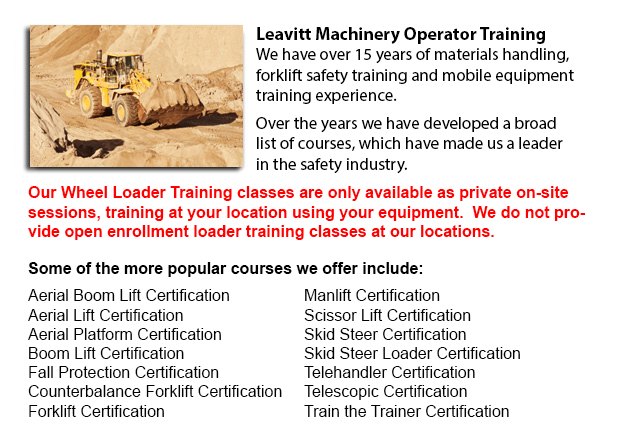
Forklifts are accessible in different load capacities and a variety of units. The majority of forklifts in a typical warehouse setting have load capacities between 1-5 tons. Bigger scale models are utilized for heavier loads, like for instance loading shipping containers, may have up to fifty tons lift capacity.
The operator can make use of a control in order to lower and raise the blades, that are also called "forks or tines." The operator could also tilt the mast to be able to compensate for a heavy load's tendency to angle the blades downward to the ground. Tilt provides an ability to function on uneven ground as well. There are yearly competitions for skilled lift truck operators to contend in timed challenges as well as obstacle courses at regional lift truck rodeo events.
General utilization
Lift trucks are safety rated for cargo at a particular utmost weight and a specific forward center of gravity. This essential information is supplied by the manufacturer and placed on a nameplate. It is vital cargo do not go beyond these details. It is prohibited in a lot of jurisdictions to interfere with or take out the nameplate without getting permission from the forklift manufacturer.
Most lift trucks have rear-wheel steering in order to enhance maneuverability. This is very helpful within confined areas and tight cornering areas. This particular type of steering varies rather a bit from a driver's first experience with different vehicles. For the reason that there is no caster action while steering, it is no essential to use steering force so as to maintain a continuous rate of turn.
Instability is another unique characteristic of forklift utilization. A constantly varying centre of gravity happens with every movement of the load amid the forklift and the load and they should be considered a unit during operation. A forklift with a raised load has centrifugal and gravitational forces that may converge to bring about a disastrous tipping mishap. To be able to prevent this from happening, a forklift should never negotiate a turn at speed with its load raised.
Lift trucks are carefully made with a cargo limit for the tines. This limit is decreased with undercutting of the load, that means the load does not butt against the fork "L," and also lowers with fork elevation. Generally, a loading plate to consult for loading reference is situated on the lift truck. It is dangerous to utilize a lift truck as a personnel hoist without first fitting it with specific safety devices like for example a "cherry picker" or "cage."
Forklift utilize in warehouse and distribution centers
Vital for any warehouse or distribution center, the lift truck should have a safe surroundings in which to accommodate their safe and efficient movement. With Drive-In/Drive-Thru Racking, a forklift has to go inside a storage bay which is many pallet positions deep to set down or get a pallet. Operators are usually guided into the bay through rails on the floor and the pallet is placed on cantilevered arms or rails. These confined manoeuvres need trained operators to do the task safely and efficiently. As each and every pallet needs the truck to go in the storage structure, damage done here is more frequent than with various kinds of storage. Whenever designing a drive-in system, considering the size of the fork truck, including overall width and mast width, must be well thought out in order to ensure all aspects of an effective and safe storage facility.
-
Hamilton Aerial Platform Training
Hamilton Aerial Platform Training - Aerial hoists are able to accommodate various odd jobs involving high and hard reaching spaces. Often utilized to perform routine repair in structures with high ceilings, prune tree branches, hoist heavy shelving u... More -
Hamilton Heavy Equipment Operator Certification
Hamilton Heavy Equipment Operator Certification - The heavy equipment operator is a person who manipulates the controls and drives different kinds of big machinery. Heavy machinery is most commonly utilized on construction sites to deliver supplies t... More -
Hamilton Scissor Lift Ticket
Hamilton Scissor Lift Ticket - Scissor lifts have greatly benefited construction operations in view of the fact that the job that used to require much effort and lots of people, can now be completed utilizing the scissor lift truck and only one indiv... More -
Hamilton Forklift Certification Courses
Hamilton Forklift Certification Courses - Forklift certification courses really help to make sure that businesses utilizing forklifts, comply with the regional and local rules. The drivers of the forklift should undergo forklift certification prior t... More -
Hamilton Forklift Training Program
Hamilton Forklift Training Program - The forklift is a common powered industrial vehicle which is in wide use these days. They are occasionally called jitneys, hi los or lift trucks. A departments store would use the forklift to unload and load merch... More -
Hamilton Forklift License
Hamilton Forklift License - Obtaining a forklift license or forklift certification in North America would require the trainee to do hands-on training in addition to classroom instruction. The state, provincial and federal regulatory bodies are respon... More -
Hamilton Manlift Operator Certification
Hamilton Manlift Operator Certification - Our aerial lift and scissor platform training and certification empowers participants with a general understanding and knowledge of the efficient and safe use of "Power Operated Mobile Work Platforms," under... More -
Hamilton Forklift Operator Certification
Hamilton Forklift Operator Certification - Forklift operator certification is usually needed for employees working in industrial, warehouse or construction setting to guarantee the safe utilization of forklifts. Workplace training has to follow a met... More

Forklift Certification Hamilton
TOLL FREE: 1-888-254-6157
Hamilton, Ontario
forkliftcertificationhamilton.com
Email Us
About Us


